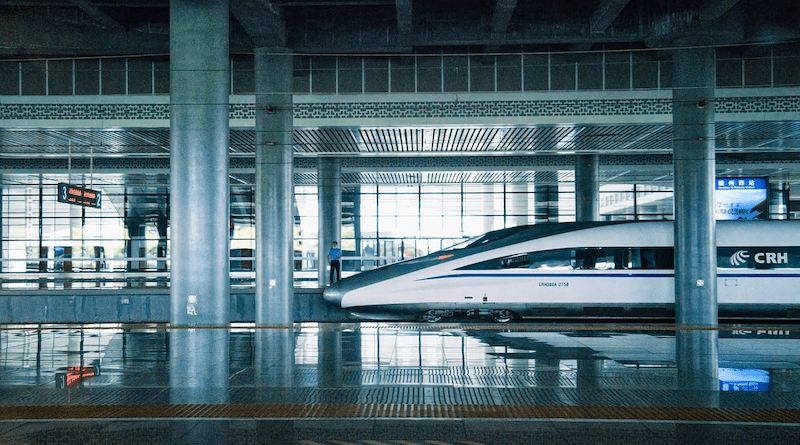Indonesia And China’s Trains – OpEd
China’s huge leverage in Indonesia has impacted Indonesia’s economic development. Over a decade, China has never been absent as the main of Indonesia’s trading partner. In the Jokowi era, for example, the Chinese investment reached nearly US$8 billion by 2022.
According to the Indonesia Investment Coordinating Board (BKPM), the investment has risen since 2018 and reached US$ 4.8 billion in 2020. For China, Indonesia is one of the essential countries in Southeast Asia. Abundant resources and trade routes are an alibi that Indonesia is a home for thousands or millions of China’s ventures. Therefore, Beijing never hesitates to offer and invest in Indonesia’s soil. In a few years, Beijing has accelerated its investment by giving or transferring some parts or the whole part of trains.
It cannot be denied that China has had an incredible experience in the industry since they built the first High-Speed Railway (HSR) in 2008, preparing for the Beijing Olympics. However, compared to Japan, China is a newbie player. Tokyo has already had that train named Shinkansen since the 1960s. Dr. Olivia Cheung, a research fellow at the China Institute of the University of London’s School of Oriental and African Studies (SOAS), argues that the railways were part of President Xi’s ambition and his grand plan for China’s economic development and integrating the national market.
From its development, Beijing is very confident in exporting trains as a product or investing in them. Since President Xi has promoted the Belt and Road Initiative (BRI) as a grand plan of China, China has poured a lot of money into Jakarta. The rising question on that issue is why Jakarta needs trains from Beijing. This view is very skeptical and broadly analyses both countries’ national interests.
The Reasons: Very Skeptical and Economic Benefits
Jakarta views Beijing as a promising partner for the future.
First, Indonesia wants to have stable and sustainable ties with China. For Indonesia, receiving more products, especially trains from China, could increase China’s trust in Indonesia. In this context, trains as an investment are a tool for Indonesia to unleash China’s investment, such as contributing to Indonesian downstream projects.
A few years ago, President Jokowi desired to run the downstream projects, but the two American companies, Air Products and Chemincal Inc. decided to withdraw from the coal gasification projects due to inefficient processes in the environment. Hence, the Chinese companies were willing to replace the US’s companies by investing in PT Kaltim Prima Coal (KPC) and PT Bumi Resources Tbk (BUMI). Besides, President Jokowi and his cabinet perceived that China has experience in downstream projects. Several Chinese companies have already operated in various cities in Indonesia. Last year, CNBC Indonesia reported that the Chinese company Contemporary Amperex Technology Co Ltd (CATL) built an electric vehicle battery factory in East Halmahera, North Maluku.
Second, the offer from China has been more suitable and reasonable than Japan’s. Despite some problems with the construction of Kereta Cepat Jakarta-Bandung (KCJB), China proposed US$ 5.5 million via business-to-business (B to B) without a state budget (APBN). On the other hand, Japan had a different offer to Indonesia. The Japanese government proposed US$ 6.2 million, using a state budget and a guarantee worth 50% of the government. Nevertheless, the government of Indonesia rationally chose China as an executor of the projects; the trains could decrease a trip from nearly three hours to just 35-45 minutes. The Indonesian government considered extending Jakarta-Bandung routes to Jakarta-Surabaya. This statement was confirmed by the Vice of State-Owned Enterprises (BUMN), Kartika Wirjoatmodjo.
Besides, recently, PT Kereta Commuter Indonesia (KCI) decided CRRC Sifang Co Ltd — a Chinese company — to import three new Electric Rain Train (KRL) worth Rp. 783 million, after refuting Japan and South Korea’s proposal fund. It was prominent in Indonesia due to the increase of commuter line users in 2024-2025, which could reach 1 million per day. Several reasons were confirmed by the government, ranging from technical aspects to competitive prices.
Third, Indonesia wants to advance infrastructure in some cities. In 2015, Palembang, the capital city of South Sumatra, prepared for the Asian Games. The government of Indonesia planned to build a rail, linking the airport to Jakabaring, the venue. PT Waskita, the project executor, said the total construction could reach Rp 10.9 trillion, and the China Development Bank (CDB) – China’s bank – invested around USD 5.1 million to construct the LRT. As reported by Kompas on July 26, 2019, in a year, the LRT could carry 2.214.737 passengers, said Regional III PT KAI Division Mohammad Purnomosidi. This year, in advancing technological facilities in Nusantara, Jokowi and his cabinet had a talk with Chinese companies and offered to China to invest in Nusantara. Minister of Transportation Budi Karya argues that China will make Nusantara’s Automated Rail Transit (ART) and could hit around 40 km/hour – 70 km/hour.
In conclusion, trains could symbolize strengthening both countries’ ties. With China, Indonesia could continue economic development by connecting the dots. Hence, Indonesia could “use” China as an opportunity to increase its economy and advance infrastructure.

